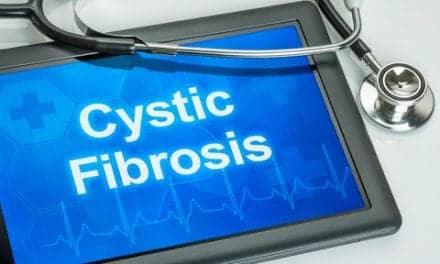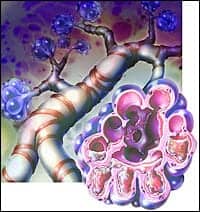Compared with isotonic saline, inhaled hypertonic saline resulted in positive lung changes in children with cystic fibrosis, research published in Lancet found.
Previously, in the Saline Hypertonic in Preschoolers (SHIP) study (ClinicalTrials.gov Identifier:NCT02378467), investigators found that inhaled 7% hypertonic saline enhanced the lung clearance index in children aged 3 to 6 years with cystic fibrosis. It remained to be elucidated, however, whether improvement occurred in structural lung disease. In the current study, investigators analyzed the impact of inhaled hypertonic saline on chest computed tomography (CT) imaging in children aged between 3 and 6 years with cystic fibrosis.
In the current study, Saline Hypertonic in Preschoolers + CT (SHIP-CT; ClinicalTrials.gov Identifier:NCT02950883) total, researchers recruited 116 participants who were randomized 1:1 to hypertonic saline or isotonic saline, with 12 patients dropping out. Chest CTs, obtained at baseline and 48 weeks, were scored using the Perth-Rotterdam Annotated Grid Morphometric Analysis for Cystic Fibrosis (PRAGMA-CF) method; the primary outcome was the difference between groups in the percentage of total lung volume occupied by abnormal airways (PRAGMA-CF %Disease) at 48 weeks.
“We showed that treatment with inhaled hypertonic saline for 48 weeks resulted in less structural lung damage compared with children in the isotonic group,” wrote the authors. “In addition, SHIP-CT combined CT outcomes and lung clearance index to improve our understanding of the relationship between structural and functional outcomes in this younger age group,” they further noted.










